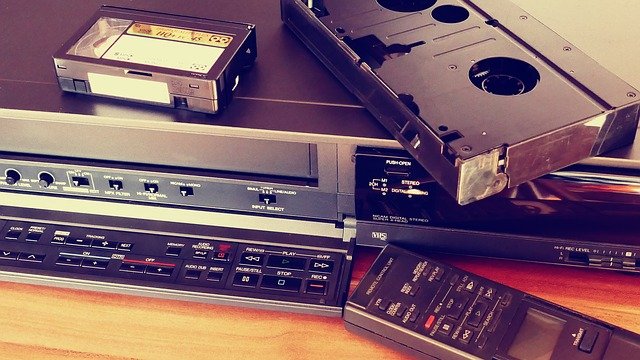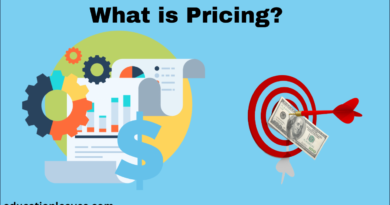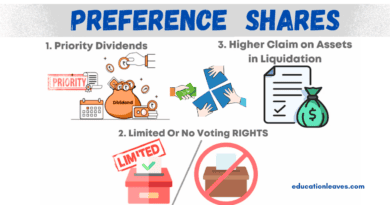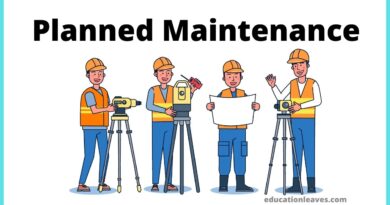What is a Product Life Cycle? 4 Stages in a Product Life Cycle, Examples, Pdf
If you look at any new or old appliance in your home, you will notice that the product is still in the market or it has discontinued by the manufacturer. That means you are experiencing different stages of the product life cycle.
When a product gets into the market, it has a life cycle that carries it from being new and exciting to eventually being retired out of circulation in the market. This process happens continuously to every product into the market, from the launching the product all the way through decline stages and eventual discontinuation. But there is some product keep circulating into the market for a long time.
Let’s explore why some products manage to stay in the market for extended periods despite the typical life cycle pattern. One key factor is continuous innovation and adaptation to changing consumer needs. Products that undergo regular updates, improvements, and rebranding can rejuvenate their appeal and extend their relevance in the market.
What you are going to learn?
What is a Product Life Cycle?
The term product life cycle refers to the time period a product is introduced to consumers into the market until it’s removed from the market. The product life cycle is the process almost every product goes through from when it is first introduced into the market until it is removed from the market.
Some of the products may stay in a long maturity state, all products eventually phase out of the market due to several factors including saturation, increased competition, decreased demand and dropping sales.
This concept is used by management and by the marketing department of companies as a factor in deciding when it is an appropriate time to increase advertising, reduce prices, expand to new markets, or redesign packaging. The life cycle of a product has 4 stages- introduction, growth, maturity, and decline stage.
4 stages of the product life cycle
There are four stages that are generally accepted in a product life cycle-
- Introduction stage,
- Growth stage,
- Maturity stage,
- Decline stage.

Introduction stage
After successfully developing a product first stage is the introduction, where the product is being launched into the market. When a new product is introduced, it is often a high-stakes time in the product’s life cycle – although it does not necessarily make or break the product’s ultimate success.
This stage basically includes a substantial investment in advertising and marketing focused on making consumers aware of the product’s features and its benefits. The market for the product is not competitive initially and also the company spends initially on the advertisement and uses various other tools for promotion.
In the introduction stage, the company is first able to get a sense of how consumers respond to the product, if they like it or not and how successful it may be. It is also a heavy-spending period for the company with no guarantee that the product will pay for itself through sales. However, in the introduction stage company want to attract customer’s attention as much as possible and confirm the product’s initial distribution, the company does not need to worry about the competition generally as the products are new.
Takeaways:
- cost of the product is very high
- slow sales volumes during this stage
- little or no competition
- demand has to be created by promotion
- customers have to be promoted to buy the product
- makes a little revenue at this stage
Growth stage
After successfully introducing the new product a gradual rise in its sales curve can be seen. At some point in this rise, a significant increase in consumer demand occurs and sales started to take off.
Other companies become aware of the product and its area in the market, which is beginning to attract attention and increasingly pull in revenue. If competition for the product becomes high, the company have to heavily invest in advertising and promotion to beat out competitors. As a result of the product sales growth, the market itself tends to expand.
As the market expands, more competition often drives prices down to make the specific products competitive. However, the product is visibly available in the market, and the product has habitual consumers. More new customers are becoming aware of the product and trying it. If the customers are becoming satisfied with the product they will buy it again and again.
Takeaways:
- sales volume starts to increase significantly
- profitability increases
- awareness of the product increases
- competition begins to increase with new companies in establishing market
- increased competition leads to decreases in price
Maturity stage
This is the most profitable stage, as the production volume increasing, the costs of producing and marketing decline. Also, its sales tend to slow – that indicating a largely saturated market. At this point, sales can even start to drop. Companies will reduce the marketing and starts to develop new or altered products to reach different market segments.
Given the highly saturated market, it is typically in the maturity stage of a product that less successful competitors are pushed out of competition -is called the “shake-out point”. The brand or the product differentiation via rebating and give discount in price to support in recalling the outlet distribution.
Longer or shorter maturity stage depending on the product. For some brands, the maturity stage is very drawn out, like Coca-Cola.
Takeaways:
- production costs are decreased as a result of production volumes increasing and experience curve effects
- sales volume at the peaks and market saturation is reached
- increase in the number of competitors entering the market
- prices of the product tend to drop due to the proliferation of competing products
- feature and benefits diversification is emphasized to maintain or increase market share
- industrial profits start to go down as sales go down
Decline stage
Although companies will hardly try to keep the product alive in the maturity stage as long as possible, the decline stage for every product is unavoidable because of the deletion of the product from the market. The product at this stage may be kept but there should be a fewer advertisement.
In this stage of the product life cycle, product sales drop rapidly and consumer behaviour changes as there is decreasing demand for the product. The product loses more and more market share, and competition tends to cause sales to decline.
Eventually, the product will be retired out of the market unless it have loyal customers or it is able to redesign itself to remain in-demand.
Takeaways:
- product costs become counter-optimal
- the number of sales declines significantly
- prices, profitability diminishes
- profit becomes more a challenge of production, distribution efficiency than increased sales
example of product life cycle
Typewriter

When the typewriter first introduced in the late 19th century, typewriters grew in popularity as a technology that improved ease and writing accuracy. However, new electronic technology like computers, laptops and even mobile has quickly replaced typewriters – causing their revenues and demand to drop off.
Typewriters could be considered at the very tail end of their decline phase – with a few sales and rapidly decreased demand. Now, the modern world almost exclusively uses computers, laptops or smartphones to type – which in turn are experiencing a growth or maturity phase of the product life cycle.
VCR

Many of us grew up watching videos using VCR (video Cassette Recorders).
We can now say the video cassette recorder (VCR) to the list of gone because it is almost dead. T, Funai Corp. of Japan announces that it is going to stop the production of VCR due to its demand decrease. Funai was the last manufacturer of VCR.
VCR has come into existence in 1950. In the year 1950 and they could sell each unit to $50000 and it gets the utmost 100 orders in the very first week.
But as streaming service like Netflix, Amazon, etc came into the market VCR costs as well demand declining people start shifting towards Netflix and amazon prime since it captures people’s attention as well it was cheap.
Factors Affecting Product life Cycle
The product life cycle (PLC) is a roadmap that illustrates a product’s journey in the market, from its introduction to its eventual decline. Several factors, both internal and external, can significantly influence the duration and success of each stage. Here’s a closer look at 7 key factors that shape a product’s life cycle:
Market Adoption:
This refers to how quickly consumers embrace the new product. Faster adoption leads to a shorter introduction stage and quicker growth. Conversely, slow uptake extends the early stages.
- Impact: Consider a revolutionary new fitness tracker. Early adopters jump on board quickly, leading to a rapid growth stage. However, a niche product with limited appeal might see a slow and extended introduction phase.
- Strategies: Creating a strong value proposition, targeted marketing campaigns, and strategic pricing can accelerate market adoption.
Competitive Landscape:
The presence and strength of competitors heavily influence the PLC. If competitors quickly introduce similar or superior products, the growth and maturity stages can be compressed.
- Impact: Imagine a new smartphone with a groundbreaking camera. If competitors quickly release phones with even better cameras, the initial phone’s growth might be stunted.
- Strategies: Innovation, unique features, and strong brand differentiation can help a product stand out and navigate a competitive market.
Technological Innovation:
The pace of technological change can dramatically shorten a product’s life cycle. In fast-moving industries like electronics, new advancements can quickly render existing products obsolete.
- Impact: Think about a personal computer. Rapid advancements in processing power and features mean earlier models become outdated faster.
- Strategies: Continuous product development, staying ahead of trends, and offering upgrades can help products stay relevant in the face of innovation.
Consumer Preferences:
Shifts in consumer tastes and trends can significantly impact demand. If a product falls out of favor with consumers due to changing styles or preferences, it can enter the decline stage prematurely.
- Impact: Consider the rise of athleisure wear. Jeans, once a staple, have seen a decline due to the growing popularity of comfortable athletic apparel.
- Strategies: Staying in tune with consumer trends, adapting product designs, and offering a variety of options can help cater to evolving preferences.
Marketing and Promotion:
Effective marketing strategies can extend the life cycle by creating brand loyalty, driving product awareness, and differentiating the product from competitors.
- Impact: A well-executed marketing campaign can reignite interest in a maturing product or create a loyal customer base for a new product, extending its growth stage.
- Strategies: Targeted advertising, influencer marketing, and building a strong brand identity can significantly influence the product’s journey in the market.
Product Quality and Reliability:
A high-quality, reliable product can lead to longer customer lifespans and repeat purchases, potentially extending the maturity stage.
- Impact: Durable kitchen appliances might see a longer maturity stage as customers trust the brand and rely on the product for years.
- Strategies: Investing in quality materials, rigorous testing, and excellent customer service can build trust and encourage repeat business.
Economic Conditions:
Economic downturns can shorten the PLC as consumers tighten their spending. Conversely, economic booms can lead to increased demand and a longer growth stage.
- Impact: During a recession, a luxury watch might see a decline in sales faster than an affordable fitness tracker.
- Strategies: Offering competitive pricing, promotions, and products catering to different budgets can help navigate economic fluctuations.
By understanding these seven factors, businesses can proactively manage their products throughout the PLC. Developing strategies that address these influences can help maximize product success, extend lifespans, and navigate the ever-changing marketplace.
Download Product Life Cycle Pdf
Product Life Cycle management
Product life cycle management (PLM) refers to the effective handling of the product while it goes through the Product life cycle. Handling includes production of the goods and making marketing strategies. Product planning has a huge role in Product life cycle management. The concept of product life cycle helps inform business decision-making, from pricing and marketing to expansion or cost-reduction.
Effective product life cycle management brings together the many other companies, departments, and employees involved with the product’s manufacturing to streamline their activities, with the ultimate goal of producing a product that beats its competitors, is highly profitable, and lasts as long as consumer desire and technology permit.
As a technology adoption, PLM software helps businesses to develop new products and bring them into the market. The software makes it easy to track and share data along the product value chain, from the product design through manufacturing, supply chain management and operations, and asset maintenance.
Conclusion
The product life cycle (PLC) offers a valuable framework for understanding a product’s journey in the market. By recognizing the distinct stages and the factors that influence them, businesses can make informed decisions to optimize product success. From crafting targeted marketing campaigns to prioritizing innovation, companies can leverage the PLC to maximize sales, build brand loyalty, and extend the lifespan of their offerings. Ultimately, a strategic approach to product life cycle management is key to navigating the ever-evolving marketplace and achieving long-term profitability.




Pingback: What is Lean Manufacturing? 5 Principles, 8 waste, PDF - EDUCATIONLEAVES
Pingback: What is Lean Six Sigma? Definitions, Principles, Benefits, 5 Certification Belts |A Comprehensive Review (PDF Included) - EDUCATIONLEAVES